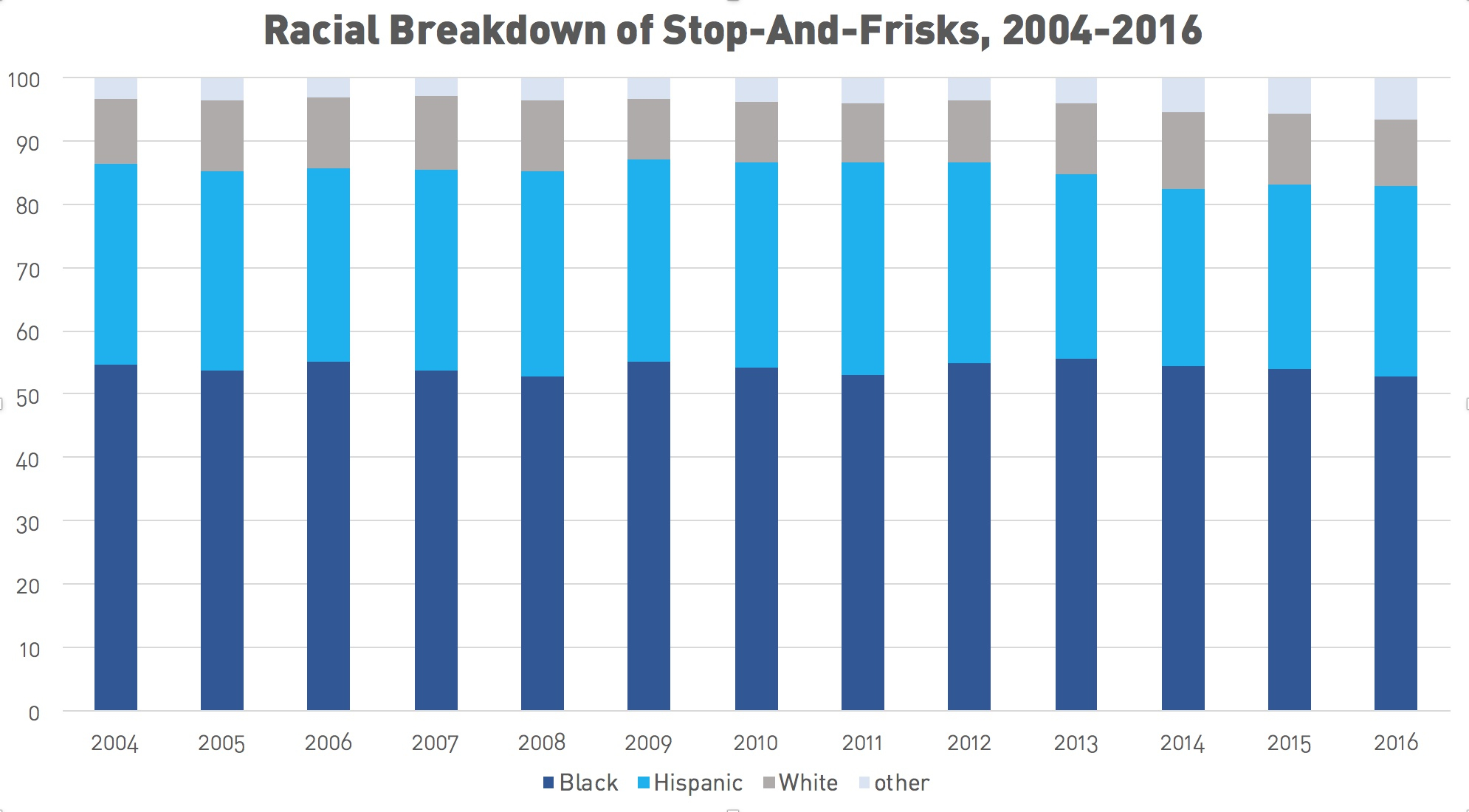NYCLU: Legal Effort to Thwart the New York ERA Is Political and Pedantic
Civil Liberties Union
Stop-and-frisks have fallen dramatically while crime in New York City remains at record lows, according to data released by the New York Civil Liberties Union. During the first six months of 2016, the NYPD reported 7,636 stops, the lowest number since the department began reporting the data to the NYCLU in 2004. At the same time, crime in 2016 has continued to drop, with murders and shootings both down from the same period in 2015.

“No one looking at the facts could claim that New York City’s massive and racially discriminatory stop-and-frisk regime made our city a better place,” said Donna Lieberman, executive director of the NYCLU. “As we finally move beyond stop-and-frisk, we hope the rest of the country spares itself the damage and learns from New York City’s mistakes.”
The NYPD’s massive stop-and-frisk program received renewed interest over the last several weeks following now widely discredited remarks by presidential candidate Donald Trump that the tactic worked “incredibly well” in New York City and by his running mate, Governor Mike Pence of Indiana, that the tactic was not “polarizing.”
The data from 2016 is yet more evidence that stop-and-frisk was not effective at stoping crime in New York City, and suggests that fewer stops corresponds to more effective stops. From 2004 to 2012, less than 10 percent of stops each quarter led to an arrest. Since then, the proportion of stops leading to an arrest has been steadily increasing, reaching its height in the first quarter of 2016 at 20.5 percent. As significantly, crime continues to decrease alongside stop-and-frisk, with murders and shootings both down from even a year ago according to the NYPD’s CompStat data (shootings are down 20 percent and murders are down 9 percent).
The latest data is also further indication that stop-and-frisk was and continues to be deeply polarizing. Despite the progress made in bringing down stop-and-frisk, unfortunately very little has changed regarding the disproportionate targeting of minorities. Over the past twelve years, Black New Yorkers consistently accounted for between 50 and 60 percent of all stops (52.7 percent so far in 2016), but less than 25 percent of the general population.
Nonetheless, the massive drop in stop-and-frisk over the last several years means that New Yorkers of all races now carry a much lighter burden. For example, in the first six months of 2011, nearly 320,000 innocent people were stopped. In the first six months of 2016, fewer than 6,000 innocent people were stopped.
“The most recent numbers once again confirm that the dramatic reduction in stops is not jeopardizing public safety. Indeed, as stops have plummeted, crime has continued to fall in New York City,” said Chris Dunn, associate legal director at the NYCLU. “We remain concerned about the stubborn racial disparities but are encouraged by the huge drop in the number of innocent Blacks being stopped.”